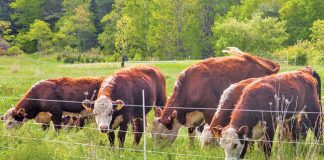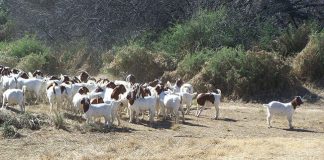Zoonoses are infectious diseases of animals that are transmitted to people. Unfortunately, many zoonoses show no clear-cut symptoms in the animal – the animal simply looks a bit ‘off colour’. Because of this, many farmers think it cannot be too serious and the animal will soon get better, so they ignore these signs. But this can prove dangerous for the farmer, his workers and family.
Fortunately, controlling the spread of diseases to humans is much easier than preventing their spread from animal to animal. The most important aspect is hygiene:
- Prevent animals from becoming infected. If they are not infected, they cannot infect people or other animals;
- Know the risk of the activity you are employed in, and wear the correct protective clothing (rubber boots, gloves, aprons and so on);
- Keep work clothing separate from the clothes you wear at home. If possible, wash and change at work so that you do not bring dangerous microbes home with you;
- Wash your work clothing regularly;
- Disinfect work utensils;
- Call in a vet or animal health technician if an animal appears sick;
- If you start feeling ‘off colour’, seek medical advice and always inform the doctor that you work with animals;
- Keep your hands clean. Avoid putting your fingers in your mouth, or rubbing your face while working. Keep wounds covered;
- Limit the amount of contact that outsiders – particularly sick people, young children, the elderly and pregnant women – have with the animals.
While these recommendations cannot prevent you from contracting a zoonotic disease, they will help to reduce your chance of catching one. Some of these measures will also prevent the spread of disease from animal to animal.

The Ebola virus seen through an electron microscope.
Centers for Disease Control and Prevention’s Public Health Image Library
Zoonoses explained
The World Health Organisation defines zoonoses as infectious diseases of animals, usually vertebrates, that can naturally be transmitted to humans. Of the 1 415 pathogens known to infect us, 61% are zoonotic. In fact, most human diseases originated in animals. Zoonoses can be transmitted directly from animals to humans through the air, bites and saliva. But transmission can also occur via an intermediate species (a vector), which carries the disease pathogen without being infected itself.
Rabies and brucellosis are well-known examples of zoonoses. And few people realise that influenza is also a zoonosis, transmitted by horses, pigs, birds, and even seals and whales! The Ebola virus is also a zoonosis; people can initially catch this from the body fluids and organs of chimpanzees, gorillas, fruit bats, monkeys and forest antelope.
? Sources: World Health Organisation, ‘Zoonoses and the Human-Animal-Ecosystems Interface’ (www.who.int); entry on ‘zoonosis’ in the medical dictionary at www.theodora.com/medical_dictionary.
Paul Donovan is a Botswana-based zoologist.













